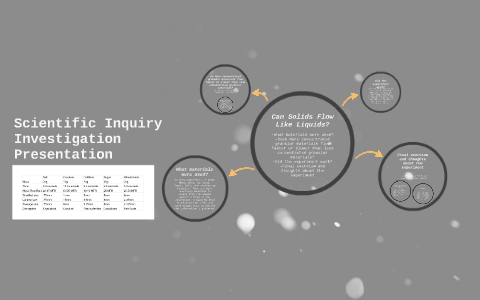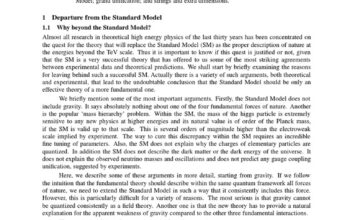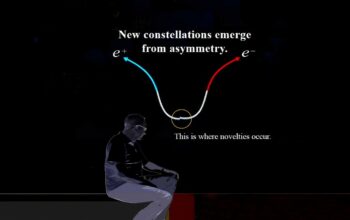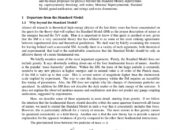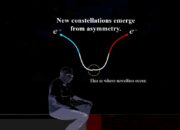The notion of solids exhibiting flow characteristics reminiscent of liquids has long tantalized both physicists and material scientists. The concept, which straddles the boundary between classical and quantum physics, takes on further complexity when examining the behavior of supersolids. Supersolids, a phase of matter that simultaneously displays crystalline structure and superfluidity, beckons a transformative understanding of matter. The pursuit of this elusive state has garnered substantial scientific interest and has galvanized research efforts into its underlying mechanisms, properties, and potential applications.
At the outset, it is crucial to delineate the distinctions between conventional solid states and the intriguing supersolid phase. Traditional solids maintain a fixed shape due to the tightly bound arrangement of their constituent atoms or molecules. In contrast, the distinctive characteristic of a supersolid resides in its capacity to flow without viscosity, akin to a liquid, while retaining a stable crystalline structure. This fascinating amalgamation of properties has raised significant questions concerning the nature of matter and the interactions at play at the quantum level.
The journey toward confirming the existence of supersolids has unfolded through meticulous experimental endeavors. The landmark discovery of supersolid behavior in helium-4—a light, inert, and abundant isotope of helium—propelled this nascent field into the limelight. Researchers observed that helium-4, when cooled to temperatures approaching absolute zero, exhibited unexpected properties indicative of supersolid behavior. In tandem with the formation of a crystalline solid, certain observations indicated the fluid-like motion of atoms, allowing them to traverse the solid without the typical constraints of solid-state physics.
Further examinations took a multi-faceted approach, employing advanced techniques such as neutron scattering, which allows for probing the dynamics of atoms within a solid. Through these analyses, researchers delineated the microscopic interactions that undergird supersolid behavior. The onset of supersolidity involves complex interactions in a Bose-Einstein condensate context, wherein a collection of indistinguishable particles behaves collectively as a coherent quantum entity. Here lies the crux of the phenomena: particles can occupy the same quantum state, leading to collective behaviors that defy classical expectations.
Transitioning from the theoretical to the empirical, subsequent experiments sought to dismantle the challenges inherent in identifying supersolid states. Scientists undertook investigations not merely focusing on helium but also exploring other candidate materials, such as hydrogen and certain alkali metals, hypothesizing that conditions conducive to supersolid behavior could possibly extend beyond helium-4. In these endeavors, researchers established a clear connection between frustration—situations where competing interactions prevent a system from settling into its lowest energy state—and the emergence of supersolid characteristics.
An essential aspect of the supersolid narrative resides in the examination of the phase transitions involved. The transition from a conventional solid to a supersolid state is marked by profound alterations in enthalpy and entropy. Under certain conditions, particularly those involving low temperature and high pressure, the balance of energy can drive the system into a state where solid-like order coexists with superfluid-like mobility. Such findings not only invigorate the scientific community’s intrigue but also herald the potential for novel applications that exploit these unique material properties.
Considerable attention has also been directed towards theoretical frameworks that support the understanding of supersolids. Recent models have elucidated the role of quantum tunneling and lattice vibrations known as phonons, which may facilitate this dual-phase behavior. Chirality—an essential concept in physics referring to asymmetrical configurations—emerges as a potential mechanism through which supersolid properties might be realized. Notably, the implications span across various fields, from condensed matter physics to potential insights into the early universe’s state post-Big Bang.
Contemplating the implications of this phenomenon extends the dialogue beyond pure scientific curiosity. The implications of understanding supersolids intersect with various technologies, particularly those informed by quantum mechanics. For example, advancements in quantum computing and materials science stand to benefit significantly from insights into supersolid states. Enhanced memory storage, improved sensor technologies, and new algorithms leveraging quantum coherence may result from an intricate understanding of matter’s multifaceted behavior.
Moreover, this research invigorates a deeper philosophical inquiry into the nature of reality itself. The concept of a supersolid challenges established paradigms and encourages a reassessment of the definitions of solid and liquid states. It intimates that the classical dichotomy may not be entirely sufficient to encapsulate the complexities of matter at drastically low temperatures. Such reflections encourage prospective explorations within the realms of thermodynamics and quantum theory, potentially pushing the boundaries of human understanding in physics.
The journey to unraveling the mysteries of supersolids continues to be a collaborative tapestry woven through theoretical predictions and experimental validations. As ongoing investigations probe deeper into this exciting domain of physics, new findings promise to enrich the existing knowledge base while captivating the scientific community’s imagination. Supersolids encapsulate the unexplored and the unexpected, enticing physicists to traverse further into the labyrinth of quantum matter and contemplate the uncharted territories that lie ahead.
In conclusion, the evidence supporting the existence of supersolids propels humanity towards a paradigm shift in understanding material properties. The possibility that solids can exhibit liquid-like flow invites deeper inquiry into the fundamental principles governing both states. This exploration not only elucidates the microscopic interactions at play but also fosters innovations that may redefine technology in a future where the boundaries between traditional states of matter become increasingly blurred.
